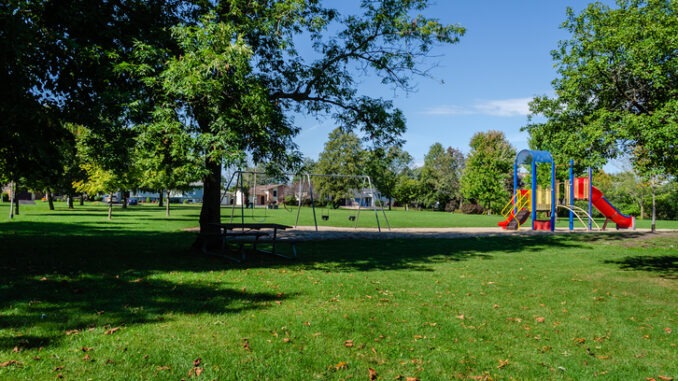As reported by The Guardian, campaigners call for private schools to share facilities as state school pupils lack playgrounds
A Guardian investigation this week found that children at England’s top private schools have access to 10 times the amount of green space that the average state school pupil can use, while there are some state school pupils who have no access to playgrounds or playing fields at all.
The Guardian has mapped out the land owned and used by the top public schools in the country, an area never previously established. Using publicly available information, our team looked at the schools in the Heads’ Conference – the association of the heads of the UK’s top private fee-charging day and boarding schools – and used satellite tools to differentiate between school buildings and the green space around them.
The analysis established that the average student at one of these schools has access to approximately 322 sq metres of green space, while the average state school student has access to about 32 sq metres of green space, a ratio of 10:1.
The Labour candidate for Hayes and Harlington, John McDonnell, who previously served as shadow chancellor, has called for the government to enact legislation to enshrine childhood green space as a right.
He said: “This is yet another example of the grotesque levels of inequality in our education system. Legislation is needed to introduce a right of access to these green spaces and sports facilities for local state school pupils.”
Clive Lewis, Labour candidate for Norwich South, said: “Any green prosperity plan by Labour has to include nature renewal and access to green space – it’s not just about growth, it’s about wellbeing and health and true prosperity across society. It can’t just be about access to a park or access to some green space while at school – schools should all have quality areas to play on site and on campus. Green renewal isn’t just about energy, it’s about people.”
The Liberal Democrats have also called on ministers to make private schools share their extensive facilities with those in the state sector.
The party’s education spokesperson, Munira Wilson, said: “Every child in this country deserves access to green spaces and playing fields.
“Many private schools undertake partnership work with their local schools, but we want this to become the norm. Ministers should be encouraging this.”
While some schools – including Rugby, which lets the public use its gym, and Eton, which lets state schools use its rowing lake – allow state school pupils to use their facilities, this is on a voluntary basis and does not happen across the board.
Campaigners have joined the call, after the Guardian’s investigation, for all children to have access to green space at school.
Lewis Winks, from the Right to Roam campaign, said: “These findings are yet another example of the stark inequalities in access to green space across our society. It’s right that private schools make good on their charitable status by sharing these extensive green spaces with their peers. Wider reform is also needed to ensure all people are given better access to the outdoors”.
While some schools enjoy access to facilities including kennels full of beagles, vast swathes of areas of outstanding natural beauty, swimming pools and golf courses, many other pupils will never encounter any of these during their education.
Kate Ashbrook, the general secretary of the Open Spaces Society, said that access to nature should be part of the national curriculum and that this would help solve inequality.
She added: “We believe that all children should have easy and safe access to green space, for play, sport or quiet enjoyment. The government has pledged to ensure that there is green space or water within a 15-minute walk from home, but so far we’ve seen zilch.
“Every child should have the opportunity to spend regular and extended times in nature and to participate in outdoor activity; this should be part of the national curriculum.”




Be the first to comment